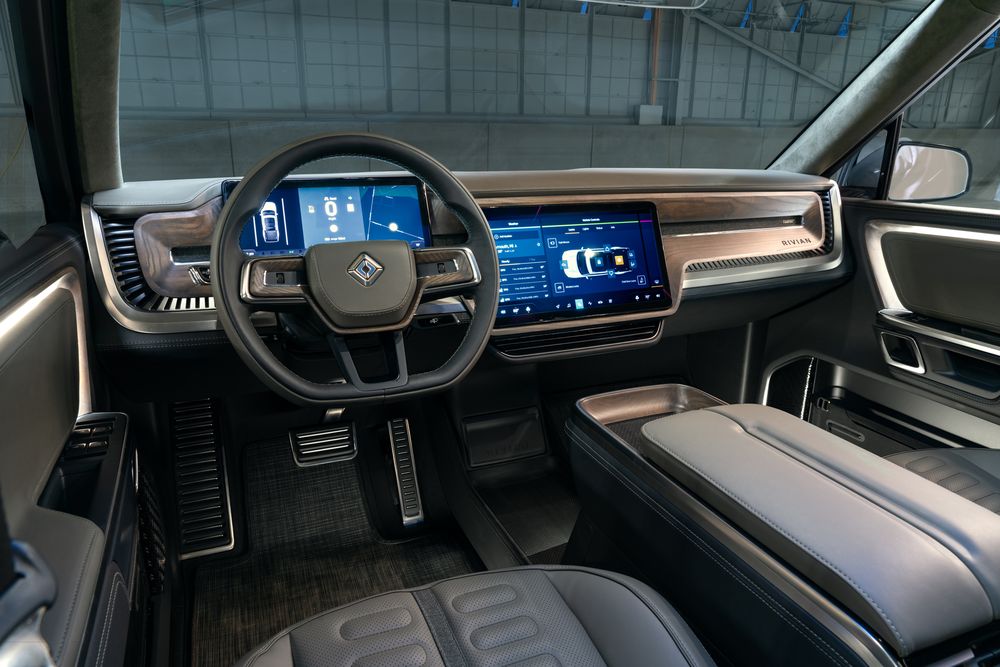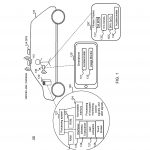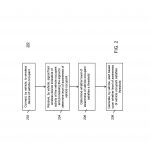

News
Rivian’s self-driving patent application hints at driver monitoring functionality
Rivian’s Associate Director of Self-Driving, Oliver Jeromin, discussed a driver monitoring system that’s part of the company’s full self-driving suite in a recent interview. Thanks to a recently published patent application by the all-electric carmaker, more details about how such a system would work are now available.
The patent application, titled “Occupant Awareness Monitoring for Autonomous Vehicles,” was published on July 25, 2019, under serial number US 2019/0225228. It describes a multi-part system wherein driver activity is interpreted through synced wireless devices either on a smartphone or directly with the vehicle itself. If a driver’s awareness is needed and determined not to be available, the vehicle will take remedial action to ensure a high level of safety.
The five levels of vehicle autonomy defined by the Society for Automotive Engineers (SAE) (and adopted by the U.S. National Highway Traffic Safety Administration) range from level 0 with no automation to level 5 with full automation. Levels 3-5 specifically require that their human driver (or passenger if Level 5) be ready to retake control of the vehicle or respond in some way under specific circumstances. That said, Rivian’s invention described in this application seeks to detect whether the necessary level of readiness is present in the driver.
- Rivian’s driver monitoring patent application. | Image: Rivian/USPTO
- Rivian’s driver monitoring patent application. | Image: Rivian/USPTO
“The present inventors have recognized the technological problem of a potential need for human intervention in connection with the operation of autonomous automotive vehicles featuring autonomy levels 3, 4, or 5, and have observed a need for a technological solution to monitor the awareness of vehicle occupants,” the application states in the background portion of the description.
The monitoring process is described to work as follows:
- Connect, by vehicle, to wireless device of vehicle occupant.
- Receive, by vehicle, signal from wireless device indicative of activity of the vehicle occupant and processing the signal to determine level of awareness of vehicle occupant.
- Determine whether level of awareness of vehicle occupant satisfies a threshold.
- Generate, by vehicle, alert based upon whether level of awareness of vehicle occupant satisfies threshold.
To accomplish these steps, Rivian proposes in the application to pair electronic devices that can track and provide driver data to the automated driving program, e.g., general smartphones or tablets, finesses trackers, and electronically connected medical devices. If a driver is watching a movie or has vital signs indicating sleep (breathing rate, pulse, etc.), the vehicle would know the driver is not ready to resume control if needed and respond appropriately.
Also described in the patent application are enforcement ideas such as a series of touch screen prompts requiring a response, and in the event of no response, the vehicle would pull over and stop. If an emergency situation were detected via the connected medical devices, the car would pull over and call 911. Along with a fitness tracker, other medical devices suggested for use in the application are glucose monitors, blood oxygen monitors, and breathalyzers.
Driver attentiveness while using self-driving features is already a problem under Level 2 programs where warning prompts are fairly strict about keeping eyes on the road. Tesla, for instance, regularly reminds its customers that Autopilot isn’t a full self-driving system yet and needs complete driver attention. However, as headlines and Tesla crash investigations have indicated, the warning isn’t always heeded.
Rivian’s driver monitoring system certainly sounds like a good step towards increasing safety measures as the carmaker continues to develop its product lines. The proposed syncing of medical devices might run into some resistance on privacy grounds, but the overall payoff that a safe self-driving experience will provide may find cause for compromise. Overall, it’s clear Rivian has safety as a priority as it prepares to enter the automotive arena with the R1T pickup truck and R1S SUV later next year.
News
Tesla begins Robotaxi certification push in Arizona: report
Tesla seems serious about expanding its Robotaxi service to several states in the coming months.

Tesla has initiated discussions with Arizona transportation regulators to certify its driverless Robotaxi service in the state, as per a recent report from Bloomberg News. The move follows Tesla’s launch of its Robotaxi pilot program in Austin, Texas, as well as CEO Elon Musk’s recent comments about the service’s expansion in the Bay Area.
The Arizona Department of Transportation confirmed to Bloomberg that Tesla has reached out to begin the certification process for autonomous ride-sharing operations in the state. While details remain limited, the outreach suggests that Tesla is serious about expanding its driverless Robotaxi service to several territories in the coming months.
The Arizona development comes as Tesla prepares to expand its service area in Austin this weekend, as per CEO Elon Musk in a post on X. Musk also stated that Tesla is targeting the San Francisco Bay Area as its next major market, with a potential launch “in a month or two,” pending regulatory approvals.
Tesla first launched its autonomous ride-hailing program on June 22 in Austin with a small fleet of Model Y vehicles, accompanied by a Tesla employee in the passenger seat to monitor safety. While still classified as a test, Musk has said the program will expand to about 1,000 vehicles in the coming months. Tesla will later upgrade its Robotaxi fleet with the Cyercab, a two-seater that is designed without a steering wheel.
Sightings of Cybercab castings around the Giga Texas complex suggests that Tesla may be ramping the initial trial production of the self-driving two-seater. Tesla, for its part, has noted in the past that volume production of the Cybercab is expected to start sometime next year.
In California, Tesla has already applied for a transportation charter-party carrier permit from the state’s Public Utilities Commission. The company is reportedly taking a phased approach to operating in California, with the Robotaxi service starting with pre-arranged rides for employees in vehicles with safety drivers.
News
Tesla sets November 6 date for 2025 Annual Shareholder Meeting
The automaker announced the date on Thursday in a Form 8-K.

Tesla has scheduled its 2025 annual shareholder meeting for November 6, addressing investor concerns that the company was nearing a legal deadline to hold the event.
The automaker announced the date on Thursday in a Form 8-K submitted to the United States Securities and Exchange Commission (SEC). The company also listed a new proposal submission deadline of July 31 for items to be included in the proxy statement.
Tesla’s announcement followed calls from a group of 27 shareholders, including the leaders of large public pension funds, which urged Tesla’s board to formally set the meeting date, as noted in a report from The Wall Street Journal.
The group noted that under Texas law, where Tesla is now incorporated, companies must hold annual meetings within 13 months of the last one if requested by shareholders. Tesla’s previous annual shareholder meeting was held on June 13, 2024, which placed the July 13 deadline in focus.
Tesla originally stated in its 2024 annual report that it would file its proxy statement by the end of April. However, an amended filing on April 30 indicated that the Board of Directors had not yet finalized a meeting date, at least at the time.
The April filing also confirmed that Tesla’s board had formed a special committee to evaluate certain matters related to CEO Elon Musk’s compensation plan. Musk’s CEO performance award remains at the center of a lengthy legal dispute in Delaware, Tesla’s former state of incorporation.
Due to the aftermath of Musk’s legal dispute about his compensation plan in Delaware, he has not been paid for his work at Tesla for several years. Musk, for his part, has noted that he is more concerned about his voting stake in Tesla than his actual salary.
At last year’s annual meeting, TSLA shareholders voted to reapprove Elon Musk’s compensation plan and ratified Tesla’s decision to relocate its legal domicile from Delaware to Texas.
Elon Musk
Grok coming to Tesla vehicles next week “at the latest:” Elon Musk
Grok’s rollout to Tesla vehicles is expected to begin next week at the latest.

Elon Musk announced on Thursday that Grok, the large language model developed by his startup xAI, will soon be available in Tesla vehicles. Grok’s rollout to Tesla vehicles is expected to begin next week at the latest, further deepening the ties between the two Elon Musk-led companies.
Tesla–xAI synergy
Musk confirmed the news on X shortly after livestreaming the release of Grok 4, xAI’s latest large language model. “Grok is coming to Tesla vehicles very soon. Next week at the latest,” Musk wrote in a post on social media platform X.
During the livestream, Musk and several members of the xAI team highlighted several upgrades to Grok 4’s voice capabilities and performance metrics, positioning the LLM as competitive with top-tier models from OpenAI and Google.
The in-vehicle integration of Grok marks a new chapter in Tesla’s AI development. While Tesla has long relied on in-house systems for autonomous driving and energy optimization, Grok’s integration would introduce conversational AI directly into its vehicles’ user experience. This integration could potentially improve customer interaction inside Tesla vehicles.
xAI and Tesla’s collaborative footprint
Grok’s upcoming rollout to Tesla vehicles adds to a growing business relationship between Tesla and xAI. Earlier this year, Tesla disclosed that it generated $198.3 million in revenue from commercial, consulting, and support agreements with xAI, as noted in a report from Bloomberg News. A large portion of that amount, however, came from the sale of Megapack energy storage systems to the artificial intelligence startup.
In July 2023, Musk polled X users about whether Tesla should invest $5 billion in xAI. While no formal investment has been made so far, 68% of poll participants voted yes, and Musk has since stated that the idea would be discussed with Tesla’s board.
-

 Elon Musk1 week ago
Elon Musk1 week agoTesla investors will be shocked by Jim Cramer’s latest assessment
-

 Elon Musk3 days ago
Elon Musk3 days agoElon Musk confirms Grok 4 launch on July 9 with livestream event
-

 Elon Musk15 hours ago
Elon Musk15 hours agoxAI launches Grok 4 with new $300/month SuperGrok Heavy subscription
-

 News7 days ago
News7 days agoTesla Model 3 ranks as the safest new car in Europe for 2025, per Euro NCAP tests
-

 Elon Musk2 weeks ago
Elon Musk2 weeks agoA Tesla just delivered itself to a customer autonomously, Elon Musk confirms
-

 Elon Musk1 week ago
Elon Musk1 week agoxAI’s Memphis data center receives air permit despite community criticism
-

 Elon Musk2 weeks ago
Elon Musk2 weeks agoTesla’s Omead Afshar, known as Elon Musk’s right-hand man, leaves company: reports
-

 News2 weeks ago
News2 weeks agoXiaomi CEO congratulates Tesla on first FSD delivery: “We have to continue learning!”



















